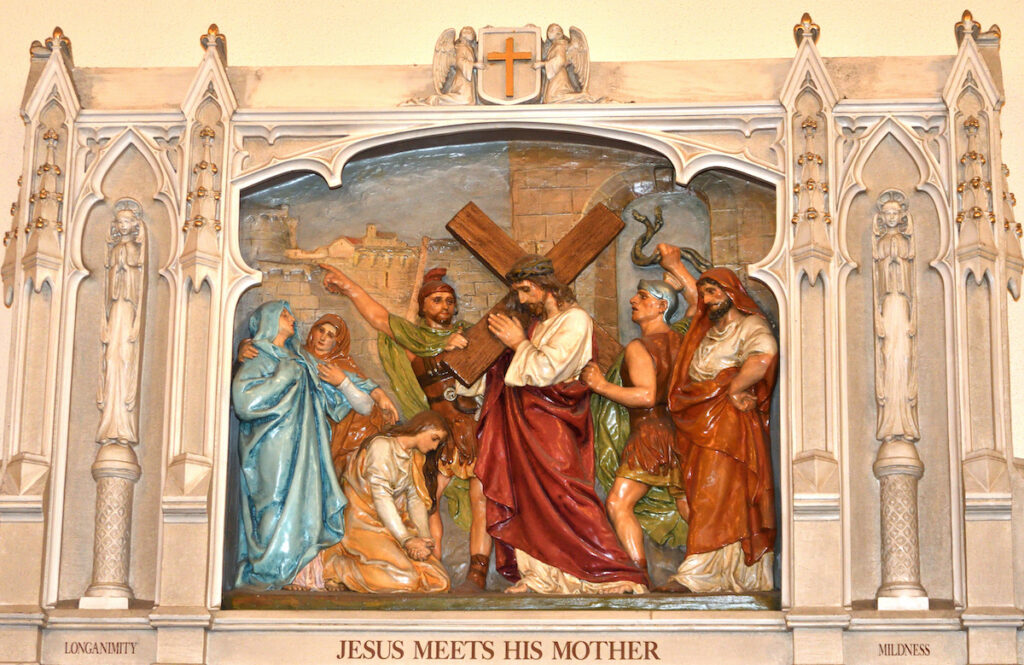
- This event has passed.
Stations of the Cross
March 22, 2024 @ 12:30 pm
After the 12:05 pm Mass during the season of Lent, join us in praying the Stations of the Cross.

Since the edict of Toleration, decreed by the Emperor Constantine in 313 under which all Christians were given the freedom of worship in the Roman Empire, Christians have wished to walk where Christ walked in the week of his Passion (Holy Week). Crowds of pilgrims have achieved this over the centuries, but for the majority it was an unrealizable dream.
Some churches in the Middle Ages had chapels to commemorate an event in the passion of Jesus and, from these, the Franciscans, since the 15th century, have developed the devotion that has come to be called the “Stations of the Cross.” The word “station” implies either “standing still” or “gathering place.”
It was not until the 17th century that stations came to be erected in churches, arranged at intervals around the walls. They took the form of wooden crosses, with a representation of an event in the passion underneath to fix the incident in the mind. They are now almost universal in Roman Catholic churches of the Latin rite and also in many Anglican churches.
At first the number of stations varied considerably, but Pope Clement XII fixed the number at 14 in 1731. Nine stations commemorate events related in the gospels (1, 2, 5, 8, 10, 11, 12, 13, 14) and five stations are from early tradition (3, 4, 6, 7, 9).



